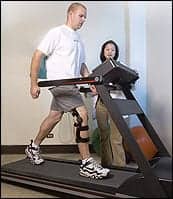Synchron Inc announces the first successful clinical implantation of the Stentrode, a component of the Synchron Brain-Computer Interface, which is being evaluated for its ability to restore digital speech in patients with severe paralysis.
The Stentrode is an investigational implantable device that does not require open brain surgery and is designed to record brain activity and stream thoughts wirelessly directly from the brain. This is reportedly the first clinical feasibility trial evaluating this minimally invasive neural interface technology for its potential to restore communication in people with severe paralysis, according to Synchron Inc in a media release.
The Synchron Brain-Computer Interface features brainOS, a brain-controlled, hands-free app platform designed to control assistive technologies directly through thought. It also features brainPort, a wireless solution implanted in the chest, that provides high-resolution neural data transmission.
“The commencement of human trials of a commercial brain computer interface is a major milestone for the industry. By using veins as a naturally existing highway into the brain, we have been able to reach the clinical stage significantly earlier than other more invasive approaches,” says Thomas Oxley, MD, PhD, CEO of Synchron.
The trial of the Stentrode in combination with brainOS software will evaluate the safety, as well as assess the stability of high-fidelity signals acquired from the brain to control external communications technologies. The trial is being conducted in Melbourne, Australia, and will include patients with loss of motor function from paralysis due to a range of conditions including spinal cord injury, stroke, muscular dystrophy, or motor neuron disease (ALS).
Pre-clinical studies have demonstrated the Stentrode’s long-term safety as well its ability to pick up specific electrical frequencies emitted by the brain.
Similar to the procedure utilized for implantation of cardiac pacemakers, implantation of the Stentrode is a minimally invasive procedure during which the device is delivered to the brain through blood vessels. As the Stentrode system is small and flexible enough to safely pass through curving blood vessels, insertion of the device does not require open brain surgery, the release explains.
“By reimagining the concept of the operating system, we have designed our technology platform to enable a completely hands-free user experience. What we learn from the first-in-human clinical trial will be highly valuable in guiding our device design and clinical protocol for a pivotal trial in the US,” Oxley continues.
Synchron is in discussions with the FDA over its regulatory strategy, and the FDA has contributed to the planning for the first-in-human trial as a preliminary step on an approval pathway. The safety and efficacy data from these first participants will be used to finalize the protocol for a pivotal FDA-enabling study that will guide evaluation for US marketing approval.
“Our bodies can only carry so much information out of the brain. This industry is going to unlock the brain’s computational power in ways that are hard to imagine now. This is just the beginning,” Oxley states.
[Source(s): Synchron Inc, PR Newswire]





